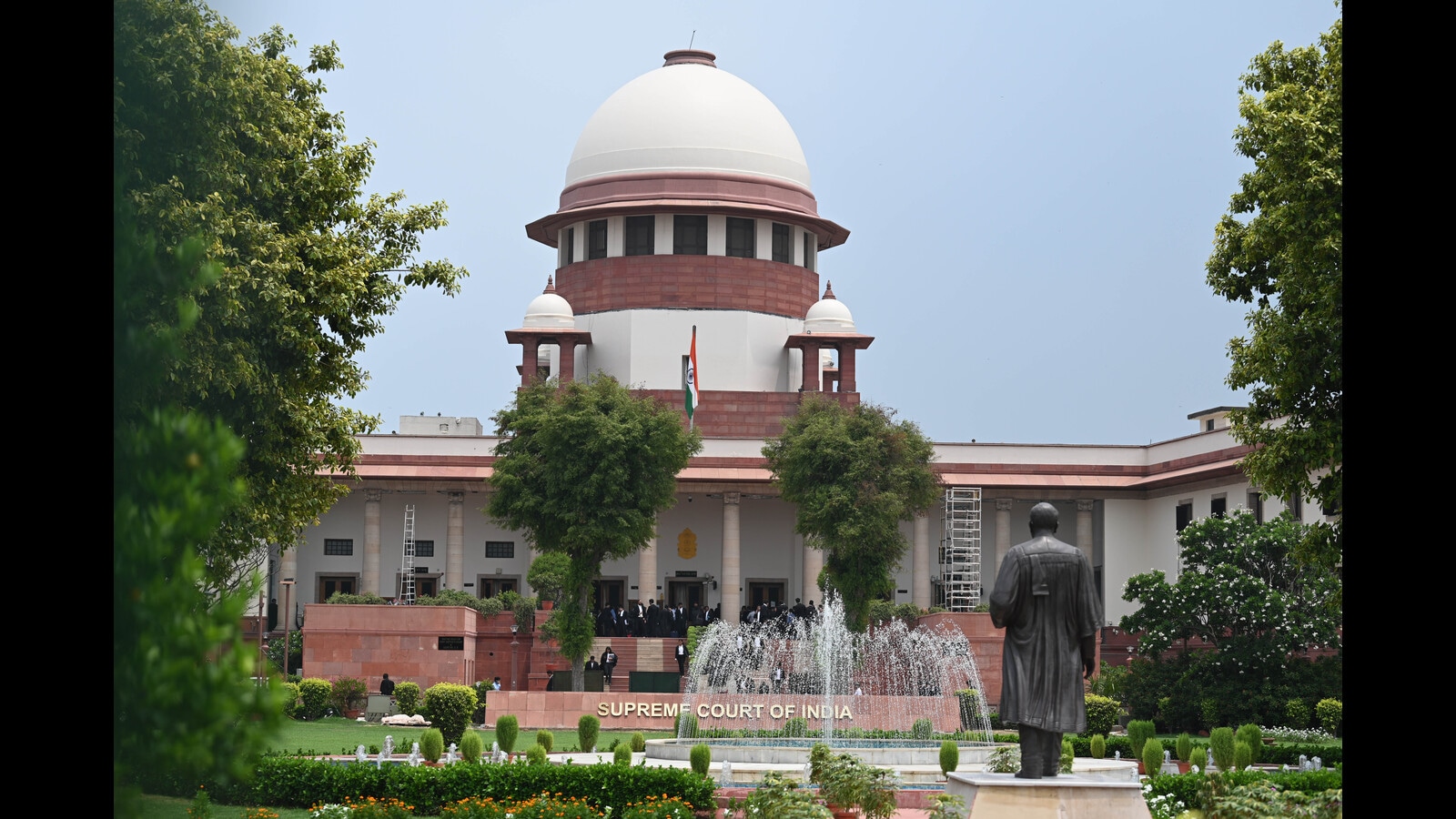The recent Supreme Court (SC) judgement in Nipun Malhotra v. Sony Pictures breaks new ground. The case arose out of the release of the film Aankh Micholi, which insensitively portrayed the physiological barriers faced by people with disabilities. For instance, the film refers to people with speech impediments as “atki hui cassette”. The petitioners’ argument before the Supreme Court was simple, asking the court to emphasise that disability discrimination is no laughing matter. But at the same time, the court was faced with the delicate task of balancing the right to cinematic freedom with the state’s constitutional duty to prevent the perpetuation of discriminatory attitudes. At the heart of the judgement is the court’s observation that “words foster institutional discrimination”, explicitly acknowledging that words have the power to impact the realities of communities.
NEW DELHI, INDIA – JULY 18, 2024: The Supreme Court of India is hearing the NEET paper leak case in New Delhi, India on Thursday, July 18, 2024. (Photo by Sanchit Khanna/Hindustan Times) (Hindustan Times) {{^userSubscribed}} {{/userSubscribed}} {{^userSubscribed}} {{/userSubscribed}}
The decision sets a benchmark for the rights, representation and recognition of people with disabilities. At the same time, the Court could have gone further in granting practical remedies.
Only on HT to know more about tax impact, key announcements, sectoral analysis and more from Union Budget 2024. Read now.
The judgement reaffirms that dignity and humour are not exclusive to able-bodied people, demonstrating that exploiting our emotional vulnerabilities is also a fundamental right, as important as providing job security (UoI v. National Federation of the Blind, 2013), equal opportunities in recruitment (Vikash Kumar, 2021) and fairness in terms of working conditions (Ravindra Dhariwal, 2021).
It is noteworthy that this was not always the case. In 2020, the Madras High Court (HC) dismissed a writ petition by M Karpagam, who challenged the official term divyang (person with “divine” body parts). In that case, the HC did not even consider the impact of ableist language on the rights of persons with disabilities and advised the petitioner to “place more emphasis on effective measures adopted by the state rather than following the trends of political correctness in terms of language”. Notably, the SC rejected the false dichotomy of words and deeds. The SC has told us that the language of our discourse, as well as its substantive consequences, must be based on recognition of the dignity of persons with disabilities.
{{^userSubscribed}} {{/userSubscribed}} {{^userSubscribed}} {{/userSubscribed}}
There is no doubt that overprotection is the antithesis of equal protection. The SC emphasizes that it is important that portrayals of people with disabilities are balanced and realistic, and show the multiple layers of disability identity. This balance is important because it recognizes that the way to address negative portrayals of people with disabilities is not to portray them as beings with special or different abilities or god-like characteristics. Rather, the correct way to portray people with disabilities is to realistically depict their disability as an aspect of their complex disability identities.
The Court has emphasised the importance of involving people with disabilities in decisions regarding the portrayal of people with disabilities and has prescribed that people with disabilities must be included in statutory and expert committees established to approve films depicting people with disabilities.
{{^userSubscribed}} {{/userSubscribed}} {{^userSubscribed}} {{/userSubscribed}}
At the relief level, the Court did not grant any of the remedies sought by the petitioners, namely to mute the objectionable parts of the film, to direct Sony Pictures to produce a new awareness film about people with disabilities, or to direct consultation with and formulation of guidelines for people with disabilities. The Court gave compelling legal justification for each of these measures. For example, the direction to mute was not granted because the film had been licensed. However, the Court subsequently made some suggestions regarding the portrayal of people with disabilities.
The legal nature of these guidelines is not immediately clear. As they come from the Supreme Court, their discursive value cannot be denied, but their legal force will be evident in subsequent cases. The Court could have directed compliance with its suggestions and had film certification bodies consult with stakeholders on dignified depiction of persons with disabilities. These directions would not have been legally challenged and would have provided a concrete blueprint for implementing the Court’s suggestions.
{{^userSubscribed}} {{/userSubscribed}} {{^userSubscribed}} {{/userSubscribed}}
Rahul Bajaj is co-founder of Mission Accessibility, Senior Associate Research Fellow (Disability Rights) at the Vidhi Law and Policy Centre, Adjunct Lecturer at BMU School of Law and a practicing advocate in Delhi courts. Pranv Dhawan is an advocate. Both Bajaj and Dhawan are former judicial clerks at the Supreme Court of India. Views expressed are personal.
News / Opinion / When it comes to disability rights, words matter as much as actions
Source link

